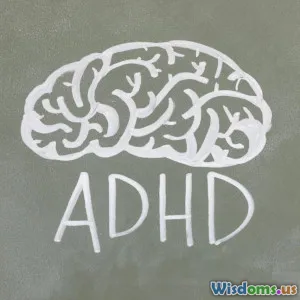
Understanding Criminal Behavior
7 min read Explore the psychological, social, and biological factors that drive criminal behavior and insight from modern criminology. (0 Reviews)
Understanding Criminal Behavior: A Criminology Perspective
Introduction
What causes someone to cross the line from abiding by laws to breaking them? Understanding criminal behavior is one of the most compelling challenges within criminology and crime investigation. While crimes often capture public attention through headlines, the psychological and social driving forces behind criminal acts remain complex and multifaceted. This article dives into the diverse factors that cultivate criminal behavior, blending insights from psychology, sociology, biology, and law enforcement to unravel how criminals come into being, why they act, and how this knowledge shapes preventive and investigatory practices.
The Psychological Framework of Criminal Behavior
The Role of Personality and Development
Psychological theories propose that individual traits, mental health, and early life experiences significantly influence criminal tendencies. For instance, the psychodynamic theory, pioneered by Sigmund Freud, suggests unresolved childhood conflicts and unconscious impulses may drive criminal acts. More recently, personality disorders, such as antisocial personality disorder, have shown a strong correlation with recurrent criminal behavior.
Studies show that children exposed to trauma or neglect often develop emotional regulation difficulties, which increases their risk of delinquency. Research from the CDC emphasizes how adverse childhood experiences (ACEs) drastically elevate the chances of later criminal involvement.
Cognitive Distortions and Moral Reasoning
Criminals often exhibit cognitive biases or distorted thinking patterns that justify their actions. For example, neutralization theory explains how offenders rationalize their crimes — they might blame the victim, deny injury, or appeal to higher loyalties. These thought processes enable them to sidestep the moral guilt that might otherwise deter illegal behavior.
Lawrence Kohlberg’s stages of moral development also provide insight; some offenders stop at pre-conventional reasoning, where the focus is on avoiding punishment rather than appreciating social rules, illuminating the role of impaired moral judgment.
Sociological Perspectives: Environment and Society’s Influence
Social Structure and Economic Factors
Sociologists emphasize that criminal behavior rarely arises in isolation from the environment. Poverty, inequality, unemployment, and lack of education fuel crime by creating social strains. Robert Merton’s strain theory depicts crime as a response to the gap between cultural goals (like wealth) and legitimate means to achieve them.
Urban criminology often points to "hot spots" where social disorganization prevails—areas characterized by community instability, broken social networks, and insufficient policing. These environments can foster gangs and elevate violence.
Cultural and Subcultural Influence
Certain cultural contexts valorize behaviors considered criminal by mainstream standards. For example, some street gangs imbue loyalty and power as paramount, encouraging activities like drug trafficking or theft. Cloward and Ohlin’s differential opportunity theory articulates that access to illegitimate means shapes the type of crime committed, highlighting the complexity of environment-led behavior.
Biological and Neurological Insights
Genetics and Brain Function
Emerging research suggests biology also plays a role. Twin and adoption studies have revealed genetic components linked to aggression and impulsivity, though there is no single "crime gene."
Neurologically, abnormalities in the prefrontal cortex—the area responsible for impulse control and decision-making—have been observed in some offenders. Renowned neuroscientist Adrian Raine’s work demonstrates how reduced activity in this region correlates with higher criminal propensity.
Additionally, biochemical factors such as imbalances in neurotransmitters like serotonin and dopamine may influence mood regulation and risk-taking behaviors.
Real-World Application: Law Enforcement and Prevention
Profiling and Criminal Investigation
Understanding the multifaceted roots of criminal behavior enhances investigative methodologies. Criminal profiling, for example, integrates behavioral patterns and psychological insights to narrow suspect pools. The FBI’s Behavioral Analysis Unit leverages these techniques to catch serial offenders by predicting their motives and traits.
Crime Prevention Strategies
Insight into criminal motives informs prevention programs focused on rehabilitation rather than just punishment. Programs addressing youth at risk often include counseling, education, and community engagement to alter trajectories before crimes occur.
Moreover, early interventions to reduce ACEs, improve neighborhood conditions, and offer social support reduce the systemic causes driving criminal behaviors. The success of restorative justice initiatives springs from recognizing offenders’ social and psychological contexts and engaging victims and communities in healing.
Conclusion
Criminal behavior is the product of an intricate interplay between individual psychology, societal environment, and biology. No single theory fully encompasses why people commit crimes, but combining perspectives allows law enforcement, policymakers, and social workers to devise more effective interventions. As research advances, particularly in neuroscience and social sciences, a deeper understanding emerges—offering promising pathways to reduce crime through informed prevention, rehabilitation, and investigation.
By appreciating the multifaceted nature of criminal behavior, society not only enhances its response to crime but also lays groundwork for empathy, systemic reform, and ultimately safer communities.
References:
- Centers for Disease Control and Prevention (CDC) on ACEs
- Raine, Adrian (2013). The Anatomy of Violence
- Merton, R. K. (1938). Social Structure and Anomie
- FBI Behavioral Analysis Unit Official Publications
Further Reading
- Criminal Behavior: A Psychological Approach by Curt Bartol
- The Oxford Handbook of Criminology by Mike Maguire et al.
Rate the Post
User Reviews
Popular Posts





















